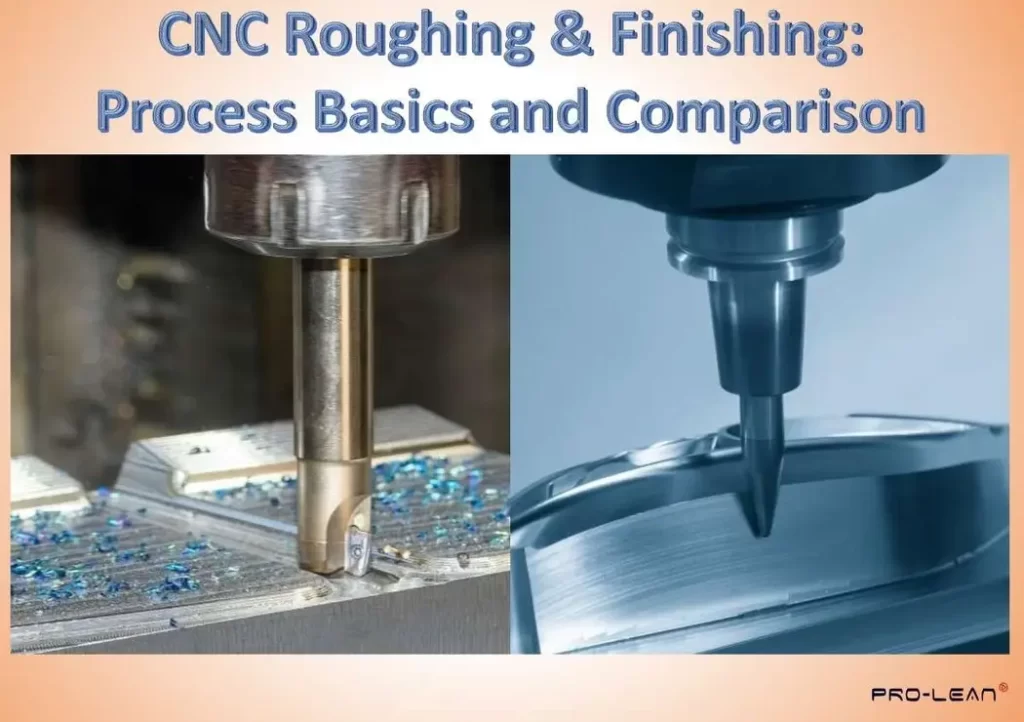
CNC Roughing & Finishing
CNC machining is a broad concept characterized by material removal from a workpiece until a final shape is attained. CNC turning, milling, drilling, and boring are some fundamental processes in machining, and all these are expertly executed at ProleanTech.
Now, it is technically impossible to attain the final form and outlook of a machined part in a single process. Roughing comes first to give the product the desired shape, followed by finishing in machining, the function of which is to attain specific resolutions on the part.
So, fundamentally, how you define roughing vs finishing for machining is different. This article will address this difference in detail, the considerations to make, and more. Please read on.
What is roughing in machining?
To define roughing, this is the first stage of the CNC machining process. Roughing gives the raw material a shape and size close to the final envisaged product. The idea of roughing is to remove large chunks of material fast.
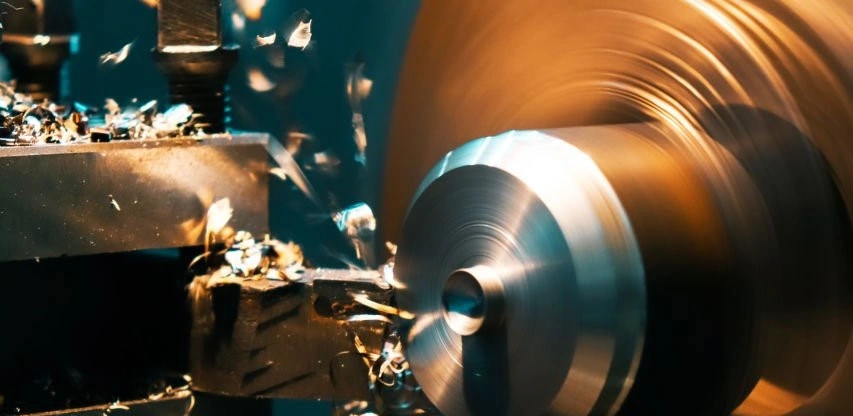
Fast Removal of Material
Using drill bits, end mills, and such tools, the machinist aims to remove material with minimal concern about precision and surface finish. Roughing is done in such a manner because the expectation is that subsequent operations will follow.
Roughing focuses on the speed of material removal to minimize tool wear and save machining time.
What are the Benefits of Roughing in Machining?
Each of the machining processes we undertake at ProleanTech impacts the quality of the end product. Our well-executed roughing in machining offers several benefits including:
Faster Machining Process
Roughing is the best process for fast removal of large amounts of material. The cutting tools and the process parameters for roughing are such that the workpiece assumes the shape of the final product very fast. Therefore, this operation fastens the overall lead time.
Safeguard Tool Life
Roughing tools are designed for this work. They do excellent work in handling the larger portion of the machining load. When the finishing process tools take over, only a little stock is remaining. This minimizes stress on the more delicate finishing tools. The overall impact is that tooling expenses are more manageable.
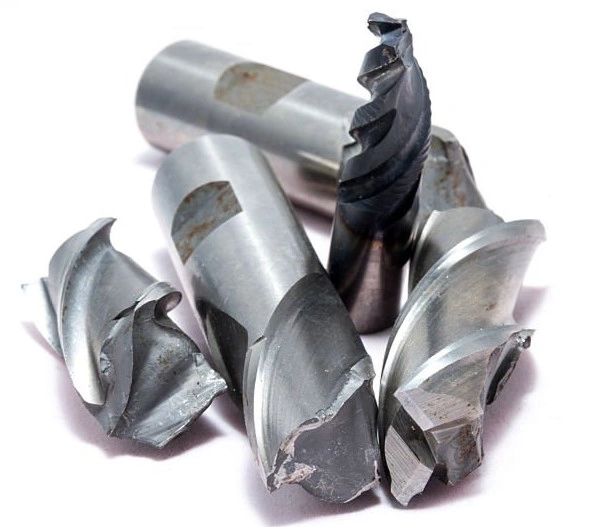
Broken machining tools
Quality of Final Part
As a precursor for finishing, roughing is an important establishment of the cutting trend to follow. The base this operation creates is crucial for the accuracy the finishing process will achieve on the part. The surface quality is also dependent on the roughing operation.
Promotes Difficult Part Machining
Roughing is also a solution for machining difficult contours and shapes. It solves this by creating the initial access that subsequent machining operations rely on. Specifically, it makes cavities and deep pockets more accessible for finishing tools.
Identifies Material Flaws
The raw material can have flaws that are yet to be identified at the point of commencing CNC machining. For instance, there can be cracks and laps in the metal due to forging operations. Taking the material through roughing can expose such irregularities.
Try Prolean Now!
What Is Finishing In Machining?
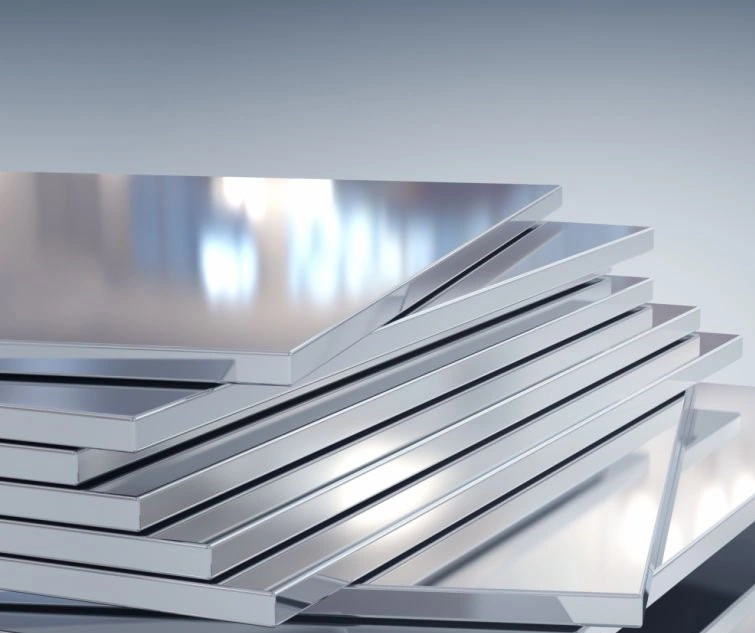
Parts that have undergone finishing in machining
Finishing in CNC machining is the final step that plays several roles. It enhances appearance, removes surface irregularities, improves aesthetics, and enhances resistance.
There are different ways or techniques of performing surface finishing on a machined part. Two main considerations when choosing a technique are the envisaged use of the product and the raw material type.
At ProleanTech, the quality of CNC machined parts is a top priority. We undertake surface finishing operations with a balance of functionality, durability, and aesthetics.
It is important to note that surface finish and surface finishing operations mean different things. The surface finish defines the exterior condition of a part. It is the property that surface finish experts describe by roughness average (Ra) and other technical terms.
Surface finishing in machining refers to the machining operations that alter a part’s surface properties.
What are the Benefits of Finishing in Machining?
Finishing is an equally necessary machining operation at ProleanTech. By proper execution of finishing in machining, we enhance impact resistance, corrosion resistance, and sealing properties of the part.
Our finishing operations are well-designed and executed by professionals with years of experience following stringent guidelines. That’s how we obtained the ISO 9001:2015 certification.
The benefits of quality surface finishing in machining include the following:
Easier Cleaning of the Part
Leaving a part in the rough machined state is usually desirable because of something like cleaning. Dirt and debris can easily accumulate on the surface even with thorough cleaning.
If the finishing process is part of the machining process, such issues are non-existent. It is easy to clean the part even with just a cloth. Finishing also removes the need for strong detergents, which could further erode the part’s surface.
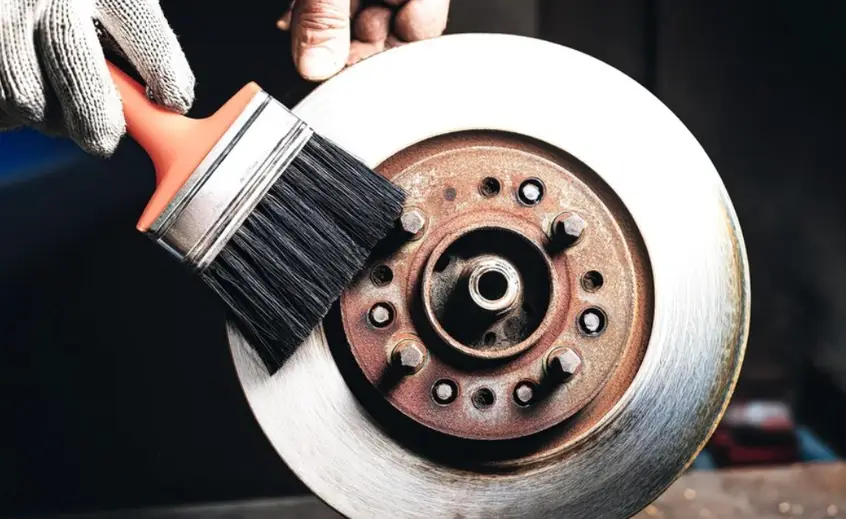
Ease of cleaning
Better Part Aesthetics
One of the most popular benefits of finishing is the kind of appearance it gives to the part. This process removes rough edges, surface unevenness, and all the other unsightly features.
With a quality surface finish, the part is more appealing and even receptive to further surface enhancement processes.
Custom Results
Surface finishing is sometimes something a client will specify. It could also be an industry standard. When done as per the customer’s request or industry requirement, it can be a big differentiator in the market, hence offering a competitive advantage.
Prolean can be a worthy partner in your pursuit for the best custom surfish finishing results. Get your quote now.
Chemical and Wear Resistance
CNC finishing is instrumental in a part’s chemical and wear resistance. A poor surface finish is perfect for chemicals to clog. Make the surface smoother and removing chemicals becomes easier.
Regarding wear, a well-done surface finish has minimal friction so the potential for abrasion is lower.
Enhanced Product Safety
Products are also safer with quality surface finishing. Imagine the repetitive use of a tool with a rough handle. Blisters can easily form and even develop wounds.
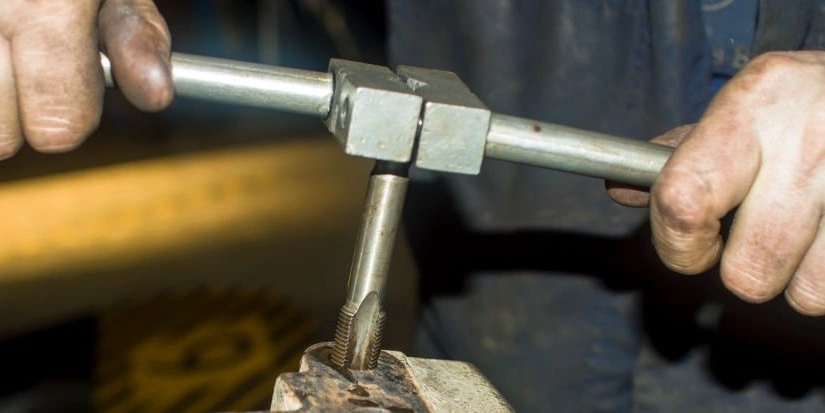
Finishing for safety
A too-smooth surface may also not be desirable in some products because sliding may mean a lack of safety. A seasoned manufacturer knows how to achieve the ideal surface finishing for user safety.
For more on these benefits, discover CNC precision machining benefits.
Important Factors for Roughing in Machining
Drawing from many years of experience providing quality machined parts, ProleanTech recommends and adheres to several considerations when performing roughing operations. That’s how we are always able to exceed customer expectations on functionality and aesthetics of machined components.
Now, here are the considerations for CNC roughing & finishing:
Type of Machine
The type of CNC machine you use to rough machine your part matters because it determines the level of accuracy and dimensional tolerance you can achieve.
Type of Material
A raw material’s mechanical and chemical properties affect the approach used in CNC roughing. For instance, a material with low thermal conductivity can be problematic; its cooling and chip evacuation demands are higher.
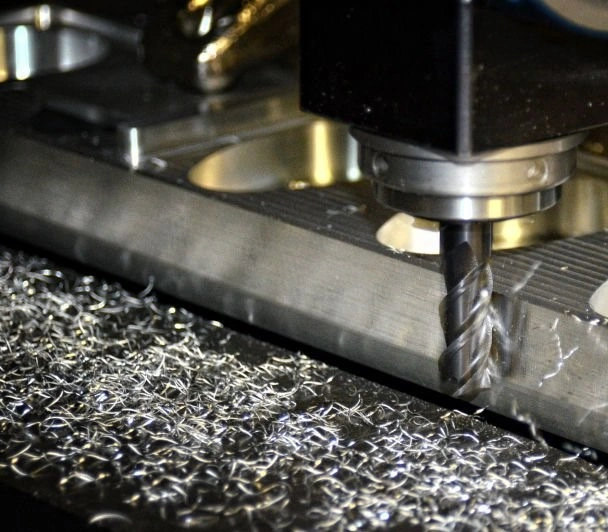
Chip evacuation is critical for some materials.
Cutting Tool
Choose the cutting tool for the roughing exercise with the consideration that there are various sizes, shapes, and CNC machining materials for it. Having the right cutting tool for the job is a critical requirement.
Some tools are designed for high chip loads; others cannot perform effectively under such situations. A tool for roughing should be designed for smooth chip evacuation and dissipation of heat.
Clamping Method
Poor clamping during roughing is undesirable because it is known to cause surface defects. This machining process generates substantial forces that are enough to cause intense vibrations.
A clamping mechanism prevents such challenges and safeguards the cutting tool against breaking.
Use of Coolant
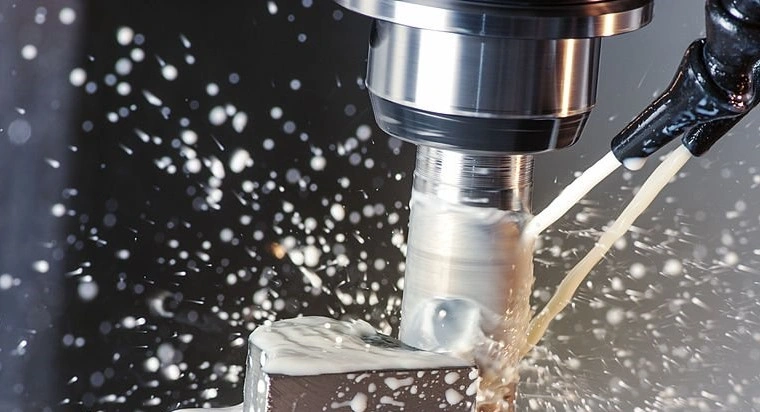
Coolant for roughing in machining
A lot of heat is generated during the roughing process. The cutting tool digs into the material at a high rate and engages the workpiece, removing large chunks of material. The amount of heat generated is monumental, so the coolant’s effectiveness is paramount.
Consider the intensity of this exercise and provide the coolant proportionately. As for the type of coolant, go for liquid-based coolants instead of oil-based ones.
Try Prolean Now!
Important Factors for Finishing in Machining
We equally weigh several factors when performing finishing in machining, knowing that each determines the eventual part’s effectiveness. From using the appropriate finishing tool to adhering to the right process parameters, Prolean Tech always strives to exceed expectations, and the results are evident.
Here are our main considerations for finishing in CNC machining:
Type of Raw Material
No matter how you try, roughing effectiveness will be affected by your choice of raw material. Each material has unique requirements for cutting speed, feed rate, cutting tool, and so on. You can machine softer materials fast, but you need slower speeds for rougher materials.
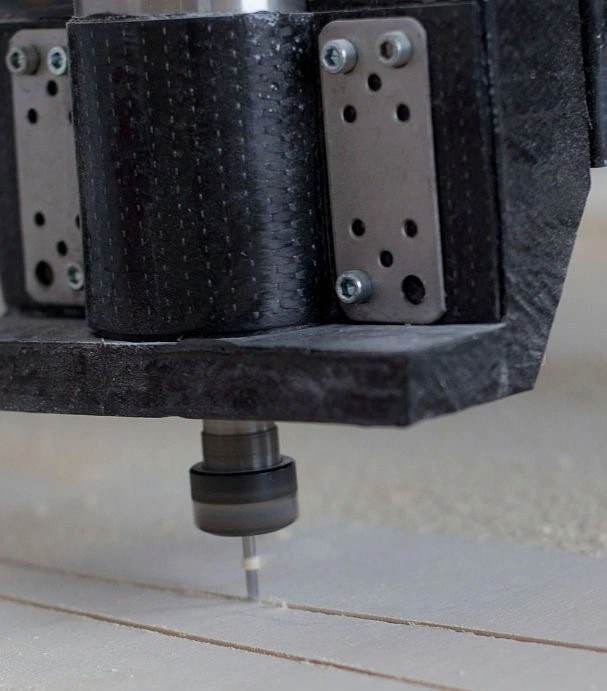
Milling soft material fast practical
Process Cost
One of the cost determinants for machined metal parts is surface finishing. The others are part design, type of raw material, and manufacturing volume.
There are instances when a part is usable in the as-machined status. However, some users will specify more surface finish requirements for functional, aesthetics, or safety reasons.
More specification means more specialized machinists, longer machining time, and more custom packaging. All these have an effect on the final cost of the product.
Part Aesthetics
This is a crucial consideration for finishing in machining because it is one of the reasons manufacturers perform this process. A client may require a specific as-machined surface finish, say one with visible tool lines or a mirror-like one.
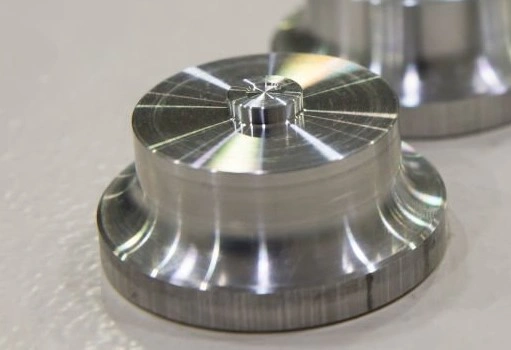
Visible tool lines on a metal component
Comparing CNC Roughing & Finishing
Prolean Tech handles each roughing and finishing process keenly with customer specifications and industry best practices in mind. We are well aware of the difference between rough cut and final cut and seek to optimize the importance of each process.
Our custom CNC machining services encompass CNC Milling, Turning, Drilling, and many other processes that can attain tolerances down to ±0.0002″ (0.005mm). We can deliver parts within one day.
Here are some of the main differences between CNC roughing & finishing:
Machining Accuracy and Tolerance
Roughing produces a rough texture that is markedly different from what finishing gives. When roughing has done the initial passes, finishing comes in with more accuracy and close tolerances.
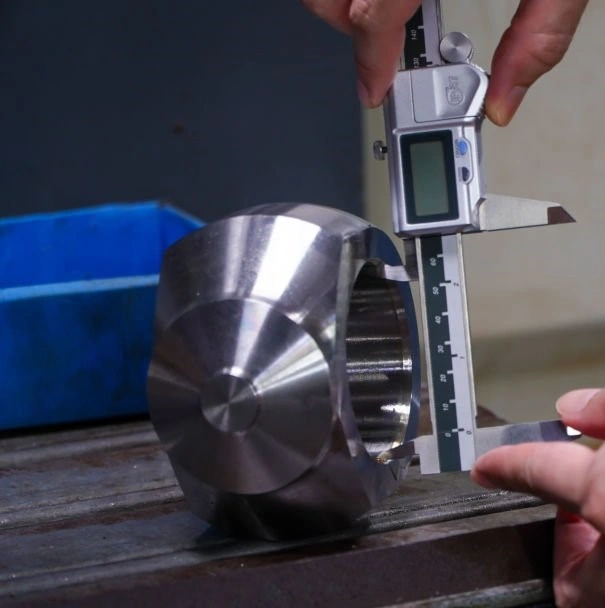
Closer tolerances are expected for finishing.
Looking at standard surface finish coefficients, the maximum for finishing is 3.2 µm (Ra) and for roughing is 12.5 µm (Ra).
Machining Time for CNC Roughing & Finishing
CNC finishing generally takes more time than roughing. The machinist has to observe high precision and tolerance requirements. This is different from roughing, which aims to remove as much material as fast as possible.
This touches on a major difference: Roughing removes excess material within a short time while finishing removes significantly less material. By the time of performing finishing for machining, the part has already assumed the general features. Only a little tweaking here and there is required.
CNC Roughing & Finishing Cutting Parameters
Roughing is done with high feed rates and cutting speeds to maximize the material removal rate. CNC finishing also requires a slower feed rate and cutting speed because its goal differs.
Equipment and Tooling Requirements
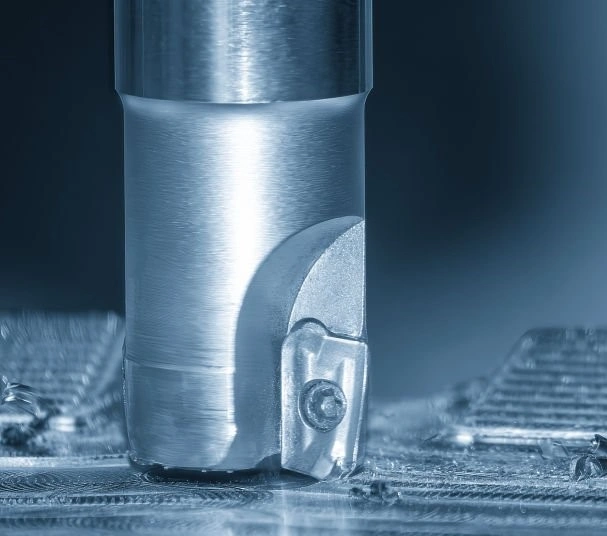
Robust roughing end milling tool
The concern for roughing equipment and tools is toughness. Are the tools tough enough to remove huge chunks of material? The end mills and cutters must be strong to suit the roughing requirements.
For CNC finishing, the focus shifts to the specialization level of the tools and equipment. The tools must be carefully selected to deliver the required surface smoothness and outlook.
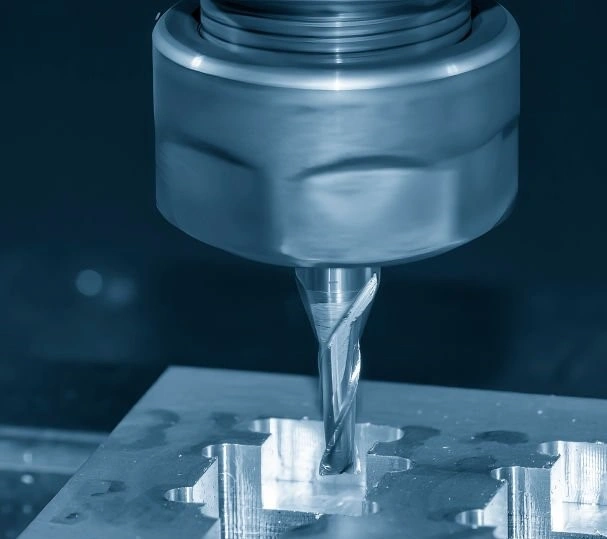
Tool designed for precise cuts
In Conclusion
However much the CNC machining world evolves, CNC roughing & finishing remain the fundamental processes for any part. The two processes continue to turn raw materials into wonderful products.
But to derive the best results for CNC roughing & finishing, we reiterate the importance of differentiating roughing and finishing processes and insisting on the best approaches for each. The secret is in using professional designs and advanced CNC machining technologies to match.
Are you still unsure whether the next step of your manufacturing project requires roughing or machining? There is no need to be stuck while Prolean Tech is available to handle all your requirements for precise and complex machined parts.
We are ready to help you with all the inquiries on the processes. Contact us today!
Faq’s:
What is machining and finishing?
Machining is the use of drills, lathes, end mills, and other tools/equipment to systematically remove material from a material until it attains a desired shape and size. It involves several steps including roughing and finishing in machining.
Finishing in machining is the last stage of the machining process characterized by precise cuts to machine the part to its specified surface smoothness, dimensions, and appearance.
What is the machining and finishing allowance?
Both machining and finishing allowances are amounts of material left on the workpiece to give room for a machining operation. For machining allowance, the material is on the workpiece before it undergoes either roughing or finishing in machining.
For finishing allowance, the material is on the workpiece after the roughing operation.
What is finishing in CNC?
Finishing in CNC is the machining process that follows roughing in machining. It involves specialized tools and cutting settings to achieve precise part measurements.
What does a machinist do?
To answer this, you need to know, what does machining mean? Machinists do various work related machining tools and equipment to produce parts.
To add to interpretation machining drawings, machinists also set up the machines and produce the parts. Machinists are also tasked with troubleshooting and maintaining these machines.

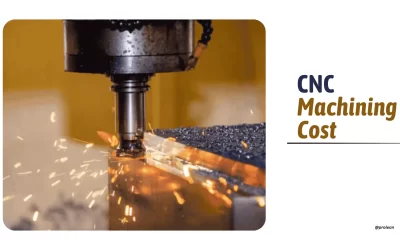
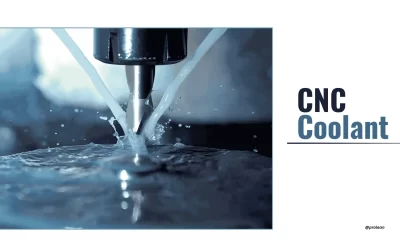
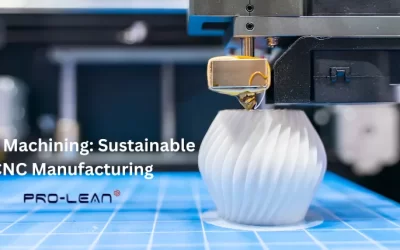
0 Comments